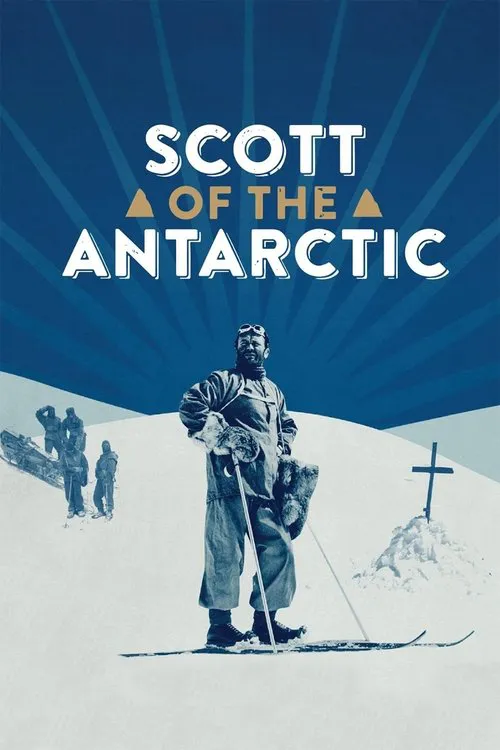Scott of the Antarctic

Intrigue
In 1910, Britain was in the midst of an era of great imperial and scientific endeavour. One of the pioneers of this era was British explorer Robert Falcon Scott, a man driven by a desire to push the boundaries of human exploration. At the age of 43, Scott was given the task of leading the British National Antarctic Expedition, a mission to explore the frozen wilderness of Antarctica with the ambitious goal of being the first person to reach the South Pole. Scott's team, known as the Terra Nova expedition, consisted of seasoned veterans of Antarctic travel, including Scott's second-in-command, Edward "Teddy" Evans. The team also included Lieutenant Henry "Birdie" Bowers, who, along with Scott, would ultimately embark on the perilous journey to the Pole. The expedition was equipped with state-of-the-art technology, including a ship, a base camp, and innovative sleds designed to carry their gear across the icy terrain. Despite warnings from seasoned explorers that the Antarctic winter was not a feasible time for the expedition to travel, Scott pressed on, driven by his determination to be the first person to stand at the bottom of the world. As the expedition arrived at their base camp, they were met with extreme cold and blizzards that made progress almost impossible. The team worked tirelessly to build their shelter and acclimatize to the harsh environment, but Scott's decision to delay their departure until the following spring proved to be a costly one. Meanwhile, a rival expedition, led by Norwegian explorer Roald Amundsen, had been secretly preparing for their own attempt on the South Pole. Amundsen's team consisted of seasoned and experienced explorers, including Olav Bjaaland and Helmer Hanssen, who would ultimately emerge as the first people to stand at the South Pole. As the British and Norwegian expeditions set out on their respective journeys, Scott and Amundsen were well aware of each other's presence. However, the British team was severely hampered by Scott's cautious nature and the extreme weather conditions. The team struggled to make progress, with temperatures often dropping to as low as -40°C (-40°F) and the winds howling at speeds of up to 100mph. In stark contrast, Amundsen's team was more agile, more efficient, and better equipped to handle the harsh environment. On December 14, 1911, Amundsen's team reached the South Pole, marking a historic achievement that would be celebrated around the world. However, their triumph came at a cost, as they were unaware that Scott's team was mere miles away, struggling to reach the Pole. On January 17, 1912, Scott's team finally reached the South Pole, but it was too late. Amundsen's team had already claimed the achievement, and Scott's team was plagued by a series of setbacks, including a critical failure of their sledges and the tragic loss of one of their team members, Lawrence "Titus" Oates, who suffered from frostbite. As Scott's team stumbled back through the unforgiving terrain, they were met with even more extreme weather conditions, which seemed determined to thwart their every attempt. The team's supplies were dwindling, and their morale had begun to fray. On March 29, 1912, Scott and his remaining team members set off on the final leg of their journey, a 75-mile trek back to their base camp. Tragically, the team never reached safety. On March 29, 1912, Scott and his team died, victims of the extreme cold and exhaustion. Their bodies were later discovered by a search party, who found a journal belonging to Scott that described the heartbreaking final days of his journey. In the journal, Scott reflected on the bravery and sacrifice of his team, who had risked everything to achieve the impossible. The loss of Scott and his team was felt throughout Britain, and the tragedy marked a turning point in the history of Antarctic exploration. Amundsen's achievement had already changed the course of history, but the sacrifices made by Scott's team would not be forgotten. Their bravery and determination in the face of overwhelming adversity would inspire generations of explorers to come, and their legacy would live on as a testament to the human spirit. In the end, the story of Scott of the Antarctic is not just one of heroism and sacrifice but also of hubris and the dangers of underestimating the power of nature. Despite the tragic outcome, the film serves as a poignant reminder of the importance of humility, perseverance, and the human will to explore and push beyond the boundaries of what is thought to be possible.
Critiques
Recommandations




